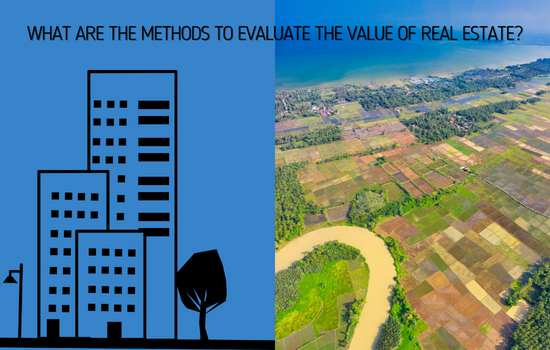Real Estate Valuation Methods: Determining the actual value of an asset while purchasing, selling, borrowing or even leasing is very crucial. The primary reason for this evaluation is that neither can the seller charge extra for a property nor will the buyer quote for a price that is less than the value of the property.
However, assessing the actual value is not easy. Whether it’s commercial land, farmland, raw land, commercial land or residential land, evaluation of market value is very complex.
The process is complex because the value is dependent upon multiple uncontrollable factors like the current market price of the land, availability of resources, location of the real estate, and much more.
Moreover, another factor that plays an important role in how much a buyer is willing to pay versus how much the seller is willing to sell, therefore, striking the right balance between the two is a tough call.
Table of Contents
What are the best Commercial Real Estate Valuation Methods?
The Capitalization Rate:
Opting for a capitalization rate, also known as a cap rate, is one of the most critical assumptions that a real estate investor is required to make while performing property valuation. Primarily, the capitalization rate is a method which is based on the net income that a property might generate in future and this value is calculated in percentage by dividing net operating income by property asset value. Moreover, this cap method is used to calculate the investor’s potential return on their investment in the real estate market.
Comparable Method:
This Real Estate Valuation Method is used to assess the market rent and market value of the real estate properties, market value of raw lands, vacant lands and land with development potential. Typically, the comparable method is defined as an item of information used during the property valuation process as evidence to support the valuation of another similar item.
Income Approach:
One of the easiest ways for property valuation is the income approach where an evaluator examines expense statements, rental rates, vacancy rates, market conditions, and other factors that influence the property’s income. Further, these projections of the income and cash flows are then used to determine the property’s value.
Cost Approach:
With the help of the cost approach the appraiser evaluates the value of a property on the basis of its replacement cost. The replacement cost means, how much would it cost to replace or reproduce the existing property on its current plot of land? Once this replacement cost is known, then later, depreciation is deducted from it and finally, the value of the site is added to determine the final value of the property value.
Gross Income Multiplier:
The Gross Income Multiplier (GIM) is an approach that is used to compare and calculate the value of the real estate by taking the property price and then dividing it by the total income. Overall, this method is used by evaluators for identifying properties that are yielding low income as compared to their actual market worth. In this case, rental data and recent sales from identical properties can be used as a basis for establishing accurate GIM.
To sum up, it can be clearly stated that valuation of real estate is not an easy task as having a robust understanding of the valuation methods and knowing when they should be applied involves lots of knowledge, thus seeking professional help is recommended.
However, at Landsale4u, we offer you the actual value of the property by conducting a thorough assessment at our end. Want to know more? Get in touch with our professionals by visiting us at www.landsale4u.com
Surender Sharma
Land record is a generic term which is used to refer to a number of records. These include Records of Rights (RoRs), register of the lands, crop inspection register, tenancy, mutation register, disputed case register, and so on. Land record also includes certain geological information in regard to the land such as the shape and size of the land, type of soil on the land. It can also include the economic information in relation to the irrigation and crops.

